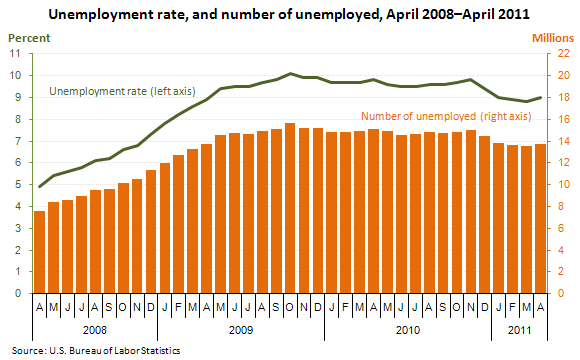More Jobs, Yet Higher Unemployment
Despite an encouraging increase in jobs in April (244,000 nonfarm payroll jobs) the unemployment rate actually ticked up in April. That’s still 0.8 percent lower than November 2010, but an uptick in unemployment at first seems disconcerting. If we’ve added so many jobs, why isn’t unemployment going down?
According to Jacob Goldstein of NPR’s Planet Money Blog (May 6), the two numbers are calculated based on two different surveys. “While the two surveys do tend to track each other pretty closely over the long term, they don’t always move in tandem each month.” But does that mean that the number of jobs added will follow the unemployment trend, or vice versa? Which is the more important number.
Goldstein put that question to Ian Shepherdson, of High Frequency Economics, who had this to say: “Over time the two measures follow the same underlying trends but the household survey [used to calculate the unemployment rate] is much more volatile over short periods.”
Meaning the unemployment rate is the less steady and less dependable measure of employment in the short term. Which, considering the numbers released for April, is good news indeed. Basically he’s saying, pay attention to the jobs increase, and the unemployment rate should follow that trend in the next month or two.


